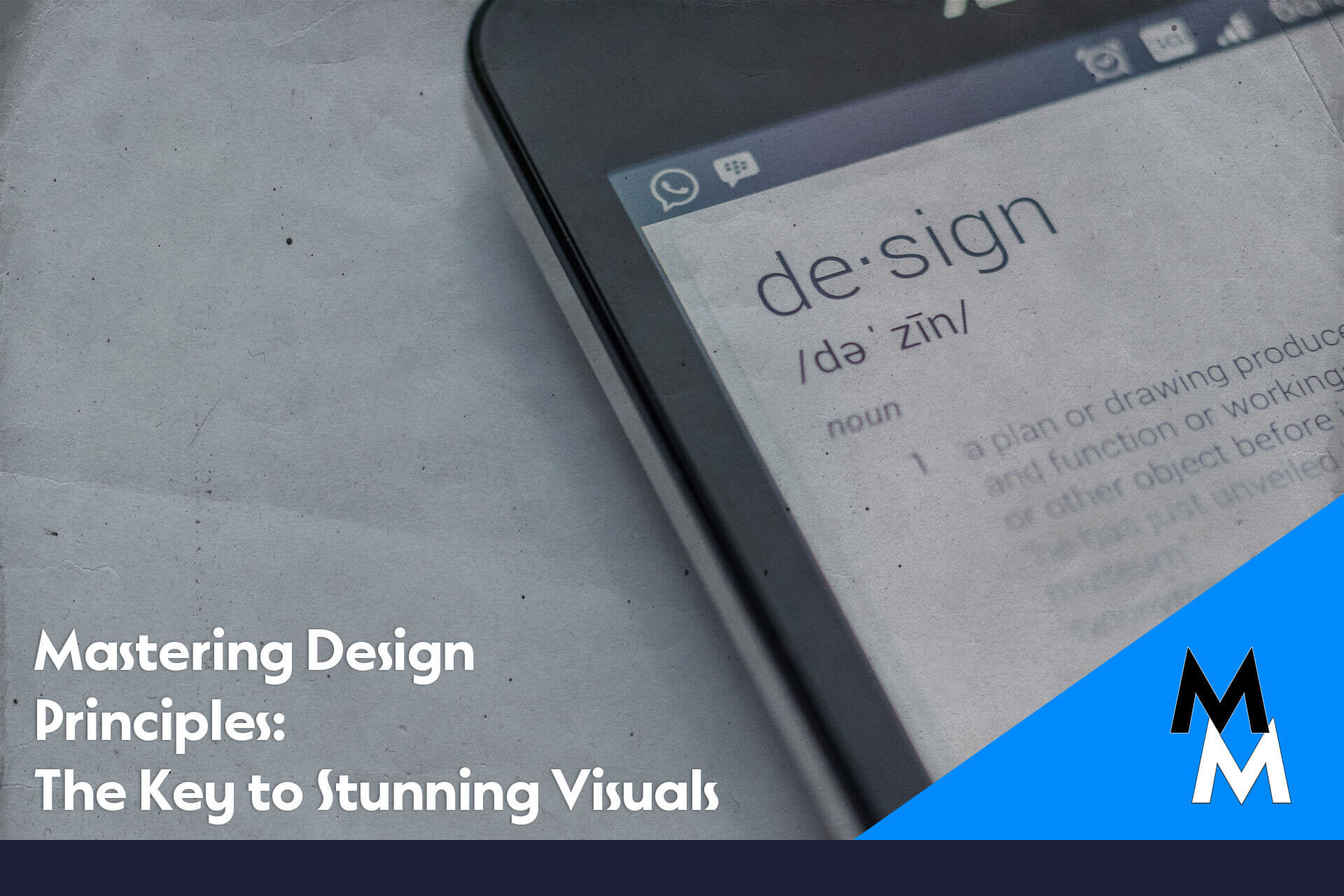Design principles are the foundation of every great visual. Whether you’re creating a website, an app, or a social media post, understanding these principles can make your content stand out. At Macel Marketing, we believe in the power of good design to transform brands. Let’s dive into some essential design principles and how you can use them to create stunning visuals.
The Basics of Design Principles
Design principles are the rules that guide the arrangement of elements in a design. Here are the basics:
1. Balance
Balance is about distributing elements evenly. It can be symmetrical or asymmetrical, but the goal is to create stability.
Symmetrical Balance
Symmetrical balance is achieved when elements are mirrored on either side of a central axis. It’s like looking at a butterfly with its wings perfectly aligned.
Asymmetrical Balance
Asymmetrical balance is more dynamic. It involves arranging elements of different sizes and weights in a way that still feels balanced. Think of a seesaw with a heavy object on one end balanced by two lighter objects on the other.
2. Contrast
Contrast helps to highlight important elements and create visual interest. It can be achieved through differences in color, size, shape, or texture.
Color Contrast
Using contrasting colors can make elements pop. For instance, pairing a bright yellow with a deep blue creates a vibrant contrast.
Size Contrast
Varying the sizes of elements can draw attention to key parts of your design. A large headline paired with smaller body text is a common example.
3. Alignment
Alignment creates a visual connection between elements. It helps to organize your design and makes it easier to follow.
Center Alignment
Center alignment is simple and straightforward. It works well for headlines and short blocks of text.
Edge Alignment
Edge alignment involves aligning elements along a common edge. This can create a clean, orderly look.
Advanced Design Principles
Now that we’ve covered the basics, let’s move on to some more advanced principles.
1. Proximity
Proximity is about placing related elements close to each other. This helps to create a relationship between them and makes the design more organized.
Grouping Elements
Grouping similar elements together can help viewers understand their connection. For example, placing a photo next to its caption makes the relationship clear.
2. Repetition
Repetition involves using the same element multiple times. It creates consistency and reinforces a theme.
Consistent Branding
Using the same colors, fonts, and styles throughout your design can create a cohesive look. This is especially important for branding.
3. Hierarchy
Hierarchy is about arranging elements to show their importance. It guides the viewer’s eye through the design in a specific order.
Using Size for Hierarchy
Larger elements are perceived as more important. Using a large headline and smaller subheadings can help establish a clear hierarchy.
Applying Design Principles to Real Projects
Let’s see how these principles can be applied to different types of projects.
Website Design
When designing a website, balance, contrast, and alignment are crucial. A well-balanced layout with contrasting colors and aligned text can make the site more appealing and easier to navigate. Check out our Website Design, Development and Management services for more insights.
Social Media Posts
For social media, proximity, repetition, and hierarchy are key. Grouping related elements, using consistent branding, and establishing a clear hierarchy can make your posts more effective. Explore our Social Media Marketing & Management services to learn more.
Enhancing Your Designs with Tools and Resources
1. Using Design Software
Tools like Adobe Photoshop and Canva can help you apply design principles effectively. These tools offer features that make it easy to balance, align, and create contrast in your designs.
2. Learning from the Experts
Following design experts like Camille Moore can provide inspiration and insights. Reading blogs and watching tutorials can help you stay updated with the latest design trends and techniques.
Conclusion
Mastering design principles is essential for creating stunning visuals. By understanding and applying these principles, you can enhance your designs and make them more effective. At Macel Marketing, we’re passionate about helping businesses succeed through great design. Want to learn more? Check out our About page and get in touch with us through our Contact Us page. For more tips on design, read our blog post on Designing Intuitive and Beautiful Digital Interfaces.
Embrace these design principles and watch your visuals come to life!





